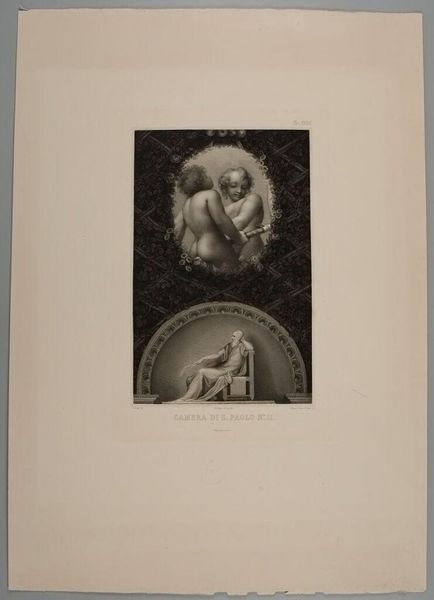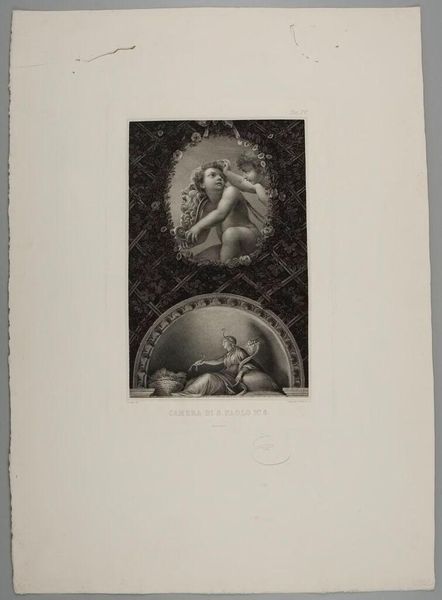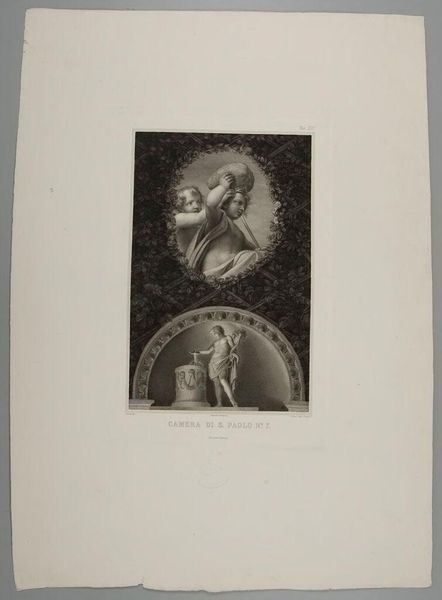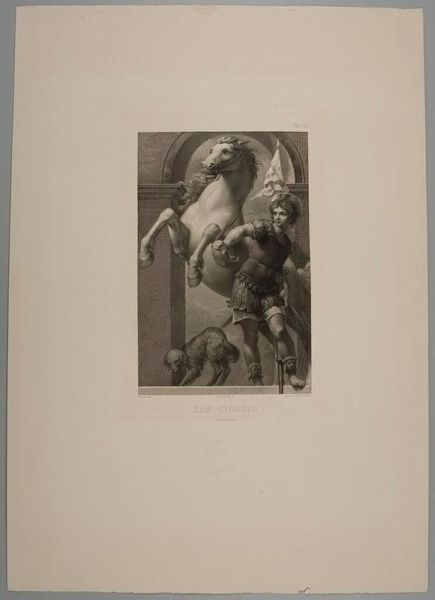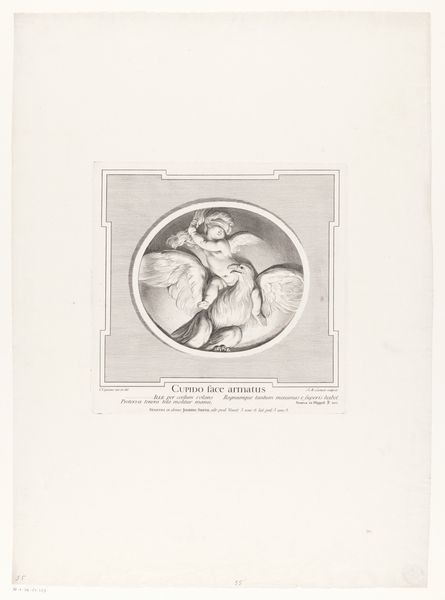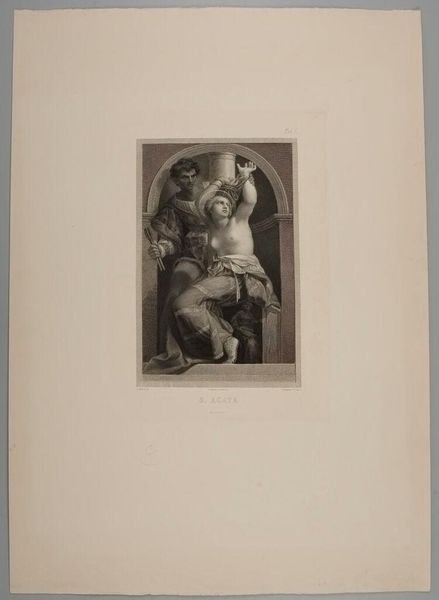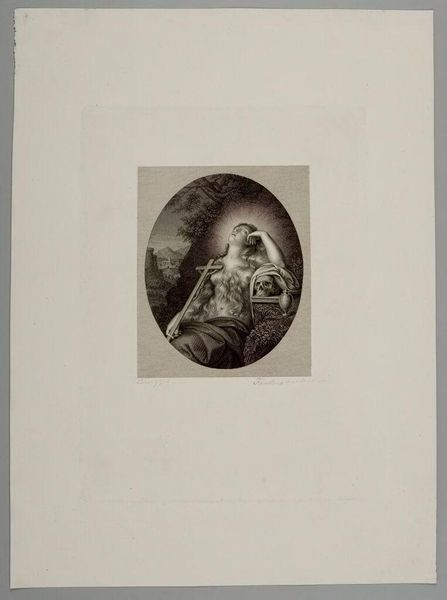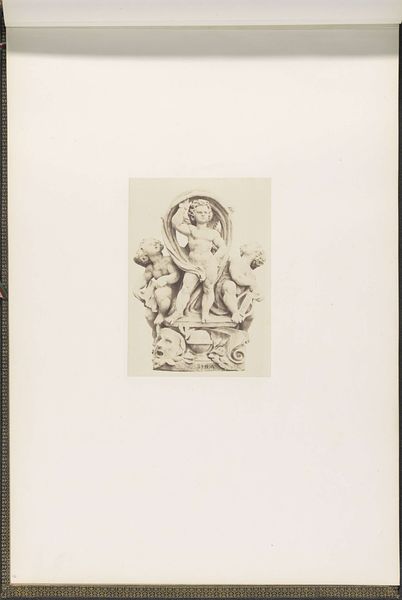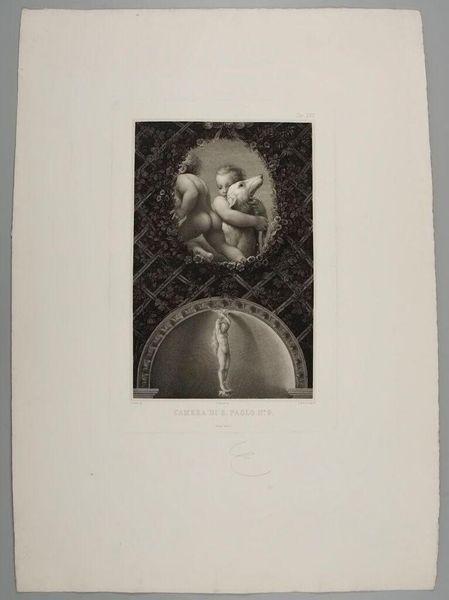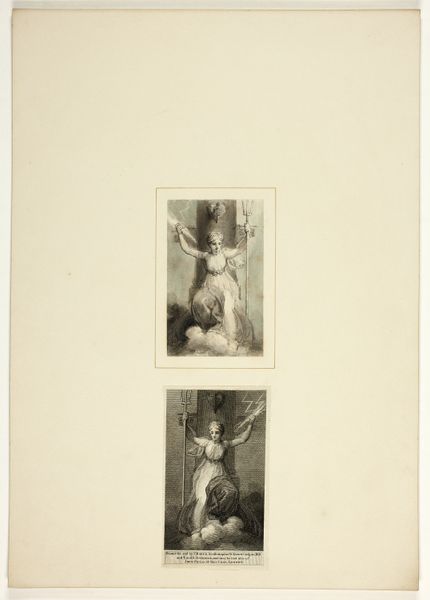
Copyright: CC0 1.0
Editor: This is Paolo Toschi's "Lunettes of the Arbor, Camera di S. Paolo." It features cherubic figures, and then below them, a classical figure. What's interesting is the contrast between what feels like innocence above, and some sort of knowledge below. What do you see in this piece? Curator: I see a reflection of the deeply embedded power structures within art history itself. The cherubs, often read as symbols of purity and divine love, are placed above a classical figure, potentially allegorical. How does this visual hierarchy reinforce Western ideals of beauty, virtue, and knowledge? Editor: That's fascinating. It makes me think about who gets to be on top, so to speak, in art and in society. Curator: Exactly. And how do these representations shape our understanding of ourselves and others? Considering Toschi's 19th-century context, what socio-political narratives might he be subtly perpetuating or perhaps even questioning? Editor: I hadn't considered it that way. I definitely have more to think about now. Curator: Absolutely, and art provides a lens to challenge those power structures.
Comments
No comments
Be the first to comment and join the conversation on the ultimate creative platform.
